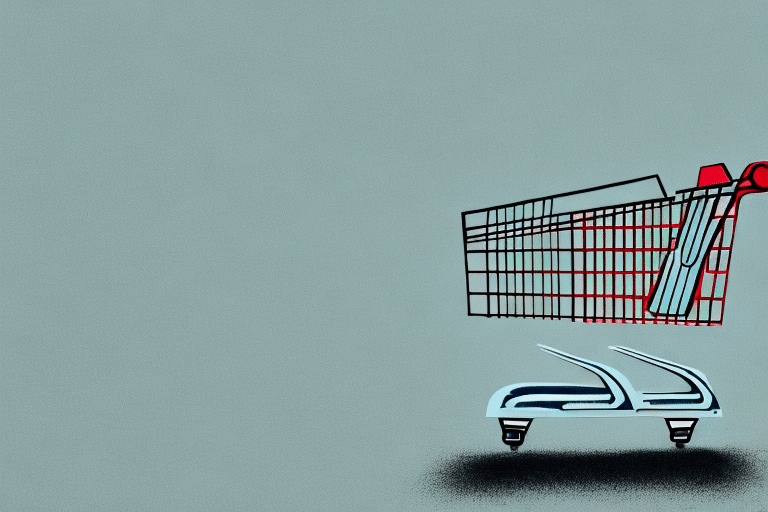Creating an Effective Abandoned Cart Workflow to Boost E-commerce Sales
Abandoned carts are a significant challenge for e-commerce businesses, representing lost sales and missed opportunities to engage with potential customers. Recent studies indicate that the average cart abandonment rate can be as high as 70%, highlighting the critical need for effective strategies to recover these lost sales. This guide explores the importance of abandoned cart workflows, common reasons behind cart abandonment, methods to identify and analyze abandonment, and the benefits of implementing an efficient workflow.
The Impact of Cart Abandonment on E-commerce
Cart abandonment poses a substantial threat to e-commerce profitability. When customers add items to their cart but do not complete the purchase, businesses miss out on potential revenue. Addressing cart abandonment can lead to increased sales, improved customer retention, and enhanced overall business performance.
Statistics on Cart Abandonment
According to the Baymard Institute, the average cart abandonment rate across all industries is approximately 69.57%. This high rate underscores the importance of developing strategies to mitigate abandonment and recover lost sales.
Lost Sales Opportunities
Every abandoned cart represents a potential sale that could have been secured. By implementing an effective abandoned cart workflow, businesses can re-engage customers, remind them of their intended purchase, and provide incentives to complete the transaction.
Common Reasons for Cart Abandonment
Understanding why customers abandon their carts is crucial for developing strategies to reduce abandonment rates. Common reasons include:
- Unexpected Costs: Additional fees such as shipping, taxes, or handling can deter customers from completing their purchase.
- Complicated Checkout Process: A lengthy or complex checkout process can frustrate customers, leading them to abandon their carts.
- Lack of Trust: Concerns about website security or the legitimacy of the business can prevent customers from finalizing their purchase.
- Limited Payment Options: If preferred payment methods are not available, customers may choose not to proceed.
- Distractions: External factors, such as interruptions or lack of time, can lead to cart abandonment.
Identifying and Analyzing Cart Abandonment
Accurately identifying and analyzing cart abandonment is essential for addressing the underlying issues. Here are strategies to help you pinpoint where and why abandonment occurs:
Using Analytics Tools
Tools like Google Analytics can provide valuable insights into customer behavior. By setting up ecommerce tracking, you can monitor the checkout process, identify drop-off points, and understand which stages need improvement.
Implementing Abandoned Cart Email Campaigns
Setting up email campaigns triggered by cart abandonment can help re-engage customers. Sending timely follow-up emails with personalized reminders and incentives can encourage customers to complete their purchase.
Benefits of an Effective Abandoned Cart Workflow
Implementing a well-structured abandoned cart workflow offers numerous benefits, including:
- Increased Sales: Recovering abandoned carts directly translates to higher revenue.
- Improved Customer Retention: Engaging with customers post-abandonment fosters loyalty and repeat business.
- Enhanced Customer Insights: Analyzing abandoned carts provides valuable data on customer preferences and behavior.
- Optimized Marketing Strategies: Insights gained can inform broader marketing and sales strategies, leading to better-targeted campaigns.
Developing an Effective Abandoned Cart Workflow
Creating a robust abandoned cart workflow involves several key steps:
Simplify the Checkout Process
Ensure that the checkout process is straightforward and user-friendly. Minimize the number of steps required to complete a purchase and provide clear instructions throughout.
Offer Multiple Payment Options
Provide a variety of payment methods to accommodate different customer preferences. Including options like credit cards, PayPal, Apple Pay, and other popular payment gateways can reduce abandonment rates.
Implement Trust Signals
Display security badges, customer reviews, and clear return policies to build trust with customers. Providing assurances about data security and product quality can alleviate concerns that lead to abandonment.
Personalize Follow-up Communications
Use personalized emails that address customers by name and reference the specific items they left in their cart. Personalized incentives, such as discounts or free shipping, can increase the likelihood of conversion.
Measuring the Success of Your Abandoned Cart Workflow
To evaluate the effectiveness of your abandoned cart workflow, track key performance indicators (KPIs) such as:
- Open Rates: The percentage of customers who open your abandoned cart emails.
- Click-Through Rates: The percentage of opened emails that result in clicks on links or calls to action.
- Conversion Rates: The percentage of customers who complete their purchase after receiving follow-up communications.
- Revenue Recovered: The total amount of sales recovered through your abandoned cart efforts.
Utilize A/B testing to experiment with different email subject lines, content, and incentives to determine what resonates best with your audience.
Best Practices for Abandoned Cart Email Campaigns
To maximize the effectiveness of your abandoned cart emails, consider the following best practices:
- Timely Follow-Up: Send the first follow-up email within an hour of cart abandonment to capitalize on the customer's recent interest.
- Clear Call to Action: Ensure that each email has a prominent and direct call to action, guiding customers back to their carts.
- Use Engaging Subject Lines: Craft compelling subject lines that encourage customers to open the email. Personalization and urgency can be effective tactics.
- Provide Incentives: Offer discounts, free shipping, or other incentives to motivate customers to complete their purchase.
- Include Product Images: Display images of the abandoned items to remind customers of what they left behind.
Crafting Engaging Subject Lines
The subject line is crucial for determining whether your email will be opened. Use personalized language and create a sense of urgency or exclusivity. Examples include:
- "Don't Miss Out on Your Items, [Customer Name]!"
- "Your Cart is Waiting – Complete Your Purchase Today"
- "Special Offer Just for You: Complete Your Order Now"
Creating Compelling Email Content
Your email content should be clear, concise, and focused on encouraging the customer to return and complete their purchase. Include the following elements:
- Personalized Greeting: Address the customer by name to create a personal connection.
- Reminder of Abandoned Items: Clearly display the products left in the cart, including images and descriptions.
- Incentives: Offer a discount code, free shipping, or another incentive to encourage completion of the purchase.
- Clear Call to Action: Provide a prominent button or link that directs the customer back to their cart.
Leveraging Social Media and Remarketing Strategies
In addition to email campaigns, integrating social media and remarketing strategies can enhance your abandoned cart recovery efforts.
Social Media Engagement
Use platforms like Facebook and Instagram to retarget customers who have abandoned their carts. Personalized offers and reminders can be delivered through social media ads, increasing the chances of conversion.
Remarketing Ads
Implement retargeting campaigns using tools like Google Ads or Facebook Ads to display ads to customers who have previously visited your site but did not complete a purchase. Tailored ads showcasing the abandoned products can effectively draw customers back to your website.
Conclusion
Addressing cart abandonment is essential for maximizing e-commerce success. By understanding the reasons behind abandonment, implementing a strategic abandoned cart workflow, and utilizing tools like email marketing and remarketing, businesses can recover lost sales and enhance customer loyalty. Continuously analyzing and optimizing your strategies will ensure sustained growth and a positive shopping experience for your customers.




















